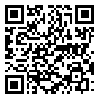Volume 15, Issue 3 (12-2024)
JAP 2024, 15(3): 57-68 |
Back to browse issues page
Ethics code: IR.IAU.H.REC.1403.031
Download citation:
BibTeX | RIS | EndNote | Medlars | ProCite | Reference Manager | RefWorks
Send citation to:



BibTeX | RIS | EndNote | Medlars | ProCite | Reference Manager | RefWorks
Send citation to:
Shahbazi M A, Jalalvand A. The Effect of Orthopedic Insoles and Gait Strategies on Kinematic Walking Parameters in Individuals with Heel Spur. JAP 2024; 15 (3) :57-68
URL: http://jap.iums.ac.ir/article-1-5775-en.html
URL: http://jap.iums.ac.ir/article-1-5775-en.html
1- MSc Student of Sport biomechanics, Hamedan Branch, Islamic Azad University, Hamedan, Iran
2- Assistant Professor of Sport biomechanics, Hamedan Branch, Islamic Azad University, Hamedan, Iran ,jalalvand_ali@yahoo.com
2- Assistant Professor of Sport biomechanics, Hamedan Branch, Islamic Azad University, Hamedan, Iran ,
Abstract: (847 Views)
Background: The aim of this study is to investigate the effect of orthopedic insoles and gait strategies on kinematic walking parameters in individuals with heel spur.
Methods: A total of 15 patients with heel spur and 15 healthy individuals with similar average height, weight, and age were selected through convenience sampling. The Vicon motion analysis system, equipped with 6 high-speed cameras and a sampling frequency of 100 Hz, was used to evaluate spatiotemporal and spatial walking parameters. A mixed-design repeated measures ANOVA was employed at a significance level of 0.05.
Results: Toe-in gait resulted in decreased cadence, ipsilateral foot-off, step length, step time, stride time, step width, and walking speed, while toe-out gait increased ipsilateral foot-off in both groups. In the heel spur group, silicone insoles and heel cups led to increased cadence, stride length, and walking speed, while reducing double-support percentage, stride time, and visual pain intensity compared to gait strategies. Silicone insoles increased step length (compared to normal walking and toe-in gait), decreased step time (compared to normal walking, heel cups, and toe-out gait), and reduced single-support percentage (compared to normal walking and toe-out gait). In heel spur patients, toe-out gait increased double-support percentage and contralateral foot-off, while toe-in gait decreased double-support and single-support percentages.
Conclusion: Walking with silicone insoles and heel cups are optimal interventions for improving and enhancing spatiotemporal walking parameters. Silicone insoles are the most effective intervention, while toe-in gait poses a potential risk factor for individuals with heel spur.
Methods: A total of 15 patients with heel spur and 15 healthy individuals with similar average height, weight, and age were selected through convenience sampling. The Vicon motion analysis system, equipped with 6 high-speed cameras and a sampling frequency of 100 Hz, was used to evaluate spatiotemporal and spatial walking parameters. A mixed-design repeated measures ANOVA was employed at a significance level of 0.05.
Results: Toe-in gait resulted in decreased cadence, ipsilateral foot-off, step length, step time, stride time, step width, and walking speed, while toe-out gait increased ipsilateral foot-off in both groups. In the heel spur group, silicone insoles and heel cups led to increased cadence, stride length, and walking speed, while reducing double-support percentage, stride time, and visual pain intensity compared to gait strategies. Silicone insoles increased step length (compared to normal walking and toe-in gait), decreased step time (compared to normal walking, heel cups, and toe-out gait), and reduced single-support percentage (compared to normal walking and toe-out gait). In heel spur patients, toe-out gait increased double-support percentage and contralateral foot-off, while toe-in gait decreased double-support and single-support percentages.
Conclusion: Walking with silicone insoles and heel cups are optimal interventions for improving and enhancing spatiotemporal walking parameters. Silicone insoles are the most effective intervention, while toe-in gait poses a potential risk factor for individuals with heel spur.
Keywords: Silicone insoles, heel cups, toe-out gait, toe-in gait, spatiotemporal parameters, pain intensity
Type of Study: Original |
Subject:
Acute pain managment
Received: 2024.12.14 | Accepted: 2024.11.22 | Published: 2024.12.30
Received: 2024.12.14 | Accepted: 2024.11.22 | Published: 2024.12.30
Send email to the article author
| Rights and permissions | |
 |
This work is licensed under a Creative Commons Attribution-NonCommercial 4.0 International License. |






